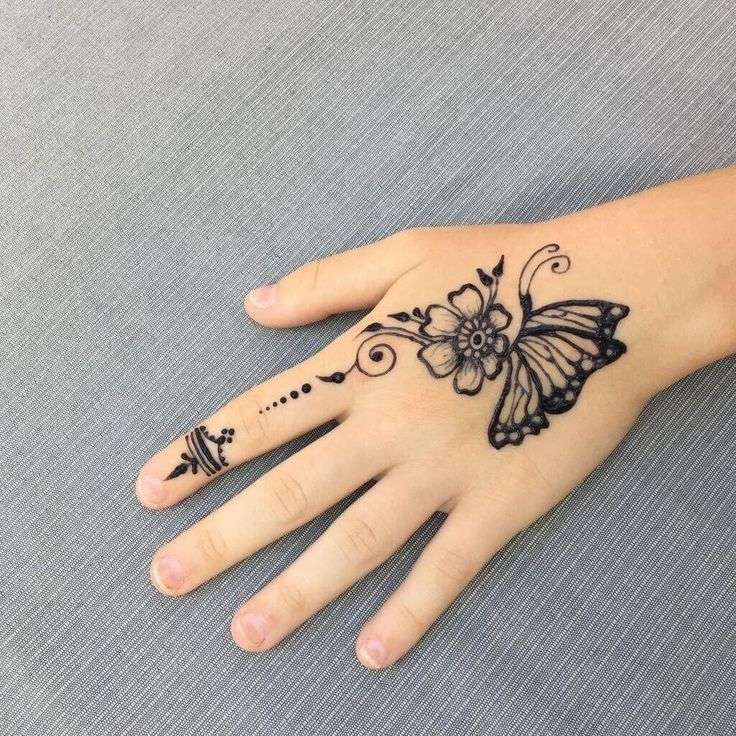A mehendi design course teaches you how to draw detailed and stunning mehendi patterns on the skin. Henna paste is used in mehendi, a type of body art, to etch beautiful patterns onto the skin. The henna plant yields the natural dye known as henna. Mehendi is frequently applied during weddings and other occasions, and it is seen as a representation of good fortune, fertility, and beauty.
Introduction
Mehendi, also known as henna, is a form of body art that uses henna paste to create intricate designs on the skin. Henna is a natural dye that is derived from the henna plant. Mehendi is often used in weddings and other celebrations, and it is seen as a symbol of beauty, fertility, and good luck.

What do Mehandi Artists do?
Henna paste is used by mehendi artists to draw stunning and detailed designs on the skin. The henna plant yields the natural dye known as henna. Mehendi is frequently applied during weddings and other occasions, and it is seen as a representation of good fortune, fertility, and beauty.
A multitude of techniques are used by mehendi artists to produce their designs. While some painters use brushes or other instruments to apply the henna paste, others utilize henna cones. From simple to sophisticated patterns, mehendi artisans are capable of producing a vast range of styles. Floral, geometrical, and animal themes are a few of the well-liked mehendi patterns.
Mehendi artists frequently perform at private gatherings, beauty parlors, or both. Additionally, they could sell their designs via the internet to clients worldwide.
Why pursue a course in Mehandi Designing?
- It is a creative and rewarding career. Mehendi Designing is a form of art that allows you to express your creativity and make people happy. You can create intricate and beautiful designs that people will cherish for years to come.
- It is a growing industry. The demand for Mehendi Artists is growing as more and more people are interested in getting Mehendi designs for weddings and other special events.
- It is a relatively easy career to start. You do not need a lot of formal education to become a Mehendi Artist. You can take a Mehendi Designing course and start practicing your skills on family and friends.
- It is a flexible career. You can work as a Mehendi Artist in a variety of settings, such as beauty salons, Mehendi parlors, and at weddings and other special events. You may also want to offer mobile services, so you can travel to your clients’ homes or other locations to apply Mehendi.
- It is a relatively inexpensive career to start. You do not need a lot of expensive equipment to become a Mehendi Artist. You can purchase a basic Mehendi Designing kit for a relatively low cost.
Types of Mehandi Designing
- Rajasthani Mehandi Design
- Arabic Mehandi Design
- Indian Mehandi Design
- Moroccan Mehandi Design
- Indo-Arabic Mehandi Design
- Bridal Mehandi Design
- Modern Mehandi Designs
- Tattoos like Mehandi Design
- Human Figures based Mehandi Designs
- Geometric Mehandi Designs
- Glitter and Embellished Mehandi Designs
- African Mehandi Designs and many more
Which types of skills required learning Mehandi skills?
- Artistic skills: Mehendi is a form of art, so it is important to have good artistic skills. This includes the ability to draw, design, and create patterns.
- Hand-eye coordination: Mehendi is applied using a cone or brush, so it is important to have good hand-eye coordination. This will help you to apply the Mehendi paste in a precise and controlled manner.
- Patience and precision: Mehendi designs can be very intricate and detailed, so it is important to be patient and precise when applying the Mehendi paste.
- Creativity: Mehendi is a creative art form, so it is important to be creative and to experiment with different designs.
Mehandi Designing Course
| Type of Course | Duration | Content |
|---|---|---|
| Basic Mehandi Designing Course: | 1-2 days | This course will teach you the basics of Mehendi designing, such as how to mix henna paste, how to apply henna paste, and how to create simple Mehendi designs. |
| Intermediate Mehandi Designing Course: | 3-5 days | This course will teach you more advanced Mehendi designing techniques, such as how to create intricate Mehendi designs, how to use different types of henna cones, and how to create custom Mehendi designs for your clients. |
| Advanced Mehandi Designing Course: | 5-7 days | This course will teach you the most advanced Mehendi designing techniques, such as how to create 3D |
Basic Material required learning Mehandi skill
- Henna paste: Henna paste is made from the henna plant, and it is the main ingredient in Mehendi designs. Henna paste is available in a variety of colors, and you can choose the color that you like best.
- Henna cone: A henna cone is a cone-shaped tool that is used to apply henna paste to the skin. Henna cones are available in a variety of sizes, and you can choose the size that is most comfortable for you to use.
- Toothpicks: Toothpicks can be used to create fine lines and details in your Mehendi designs.
- Q-tips: Q-tips can be used to clean up any mistakes that you make while applying henna paste.
- Water: Water is used to mix henna paste and to clean up your Mehendi designs.
- Paper: Paper can be used to practice your Mehendi designs on.
- Pencil: Pencil can be used to sketch out your Mehendi designs on paper before applying them to your skin
Salary of Mehandi artists
| Country | Salary |
|---|---|
| India | 10,000 – 50,000 INR per month |
| United States | 1000 – 5000 USD per month |
| United Kingdom | 500 – 2500 GBP per month |
| Canada | 1000 – 5000 CAD per month |
| Australia | 1000 – 5000 AUD per month |
FAQs
Mehendi, also known as henna, is a form of body art that uses henna paste to create intricate designs on the skin. Henna is a natural dye that is derived from the henna plant. Mehendi is often used in weddings and other celebrations, and it is seen as a symbol of beauty, fertility, and good luck.
Mehendi is applied using a cone or brush. The henna paste is applied to the skin in a thin layer, and it is allowed to dry completely. Once the henna paste is dry, it is removed from the skin, and the design is revealed
Mehendi typically lasts for 5-7 days, but it can last up to 2 weeks with proper care. To keep your Mehendi looking its best, avoid washing it with soap and water for the first 24 hours. After that, you can wash it gently with soap and water. You can also apply a thin layer of oil to your Mehendi to help it last longer.
Mehendi is generally safe for most people. However, some people may experience allergic reactions to henna. If you have sensitive skin, it is important to test a small amount of henna paste on your skin before applying it to a larger area






